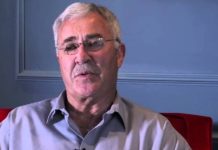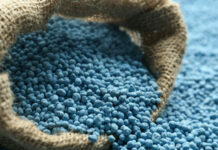
[miningmx.com] — IF LEFT unchecked, the millions of litres of rapidly-rising acid mine water under Johannesburg will start flooding the lower levels of the Gold Reef City tourist mine early next year.
Shortly thereafter, the acid mine drainage, as it is known, will pass through an “environmentally critical” level – with potentially devastating consequences – before starting to flow out on the surface.
This is according to a report titled “Mine Water Management in the Witwatersrand Gold Fields with Special Emphasis on Acid Mine Drainage”, compiled by a group of experts and presented to cabinet last week.
A copy of the document, dated December, was posted on the department of water affairs’ website on Thursday.
It warns that if the water is allowed to continue to rise, it will start “decanting in low-lying areas in the vicinity of the ERPM Mine in Boksburg and possibly elsewhere across the Witwatersrand”.
Before this, it will “flood the underground mine operated as a tourist attraction at Gold Reef City”.
According to a chart contained in the report, this will start happening in March next year.
The water will also “rise to an environmentally critical level where local groundwater systems could be influenced, particularly the dolomitic aquifers to the south, ERPM in Boksburg and Durban deep in Roodepoort”.
Among the threats posed by the rising acid water – which has a pH of three, approximately that of lemon juice – is increased seismic activity, including earth tremors.
“This could have a moderate localised effect on property and infrastructure,” the report finds.
It recommends urgent action.
“It is recommended that AMD (acid mine drainage) intervention and management measures are undertaken in the Western, Central and Eastern Basins as a matter of urgency.”
The basins referred to are areas of interconnected mining tunnels underlying the Witwatersrand. Johannesburg is located atop the so-called Central Basin.
The acid water in the Western Basin, below the Krugersdorp-Randfontein area, started decanting in 2002.
According to the report, the current treatment of the overflowing acid water is inadequate, and poses a threat to the Cradle of Humankind World Heritage Site.
Minister in the Presidency Trevor Manuel on Tuesday moved to reassure Gauteng residents there was “no cause for panic” about the acid mine water.
Briefing journalists at parliament following last week’s cabinet meeting, he said the executive had examined recommendations by the team of experts on how to deal with the threat of AMD.
“As a government, we want to give all South Africans the assurance that this matter is receiving attention; that the science is exceptionally good on this matter; and that there is actually no cause for panic about it. I want to repeat that: there is no cause for panic about it,” Manuel said.
Speaking at the briefing, acting water affairs director-general Trevor Balzer said that in terms of the Central Basin – where the water is rising at a rate of between 0.3 and 0.9 metres a day – it was essential to have pump stations operational by March next year.
“We would need to make sure we have new pump stations operational by March 2012… this is very feasible.
“By [this date] we should have the pump stations established and be able to move water out of the basin,” he told journalists.
In his Budget speech on Wednesday, Finance Minister Pravin Gordhan announced that funding had been allocated “for the acid water drainage threat associated with abandoned mines”.
NO ‘ONE SIZE FITS ALL’
According to the executive summary of the report, there is no “one size fits all” solution to the problem.
It proposes the establishment of various pumping facilities and neutralisation plants to deal with the problem.
The water pumped out of the old mine tunnels is not suitable for productive use or discharge into river systems, and has to be treated.
The report also recommends that the ingress of water to underground workings be reduced as far as possible.
On the costs of dealing with the problem, it finds that “the feasibility of implementing an environmental levy to be paid by operating mines in order to cover the costs of the legacies of past mining” should be investigated.
Acid mine water is a legacy of 120 years of gold mining on the Witwatersrand.
It is formed underground when old shafts and tunnels fill up. The water oxidises with the sulphide mineral iron pyrite, better known as fool’s gold. It then fills the mine and starts decanting into the environment, in the process known as acid mine drainage.
The rising water is also threatening the economic mining of the remaining gold under Johannesburg.
According to the report, the operations of the company Central Rand Gold (CRG), a new entrant to the mining industry, will come under threat in the Central Basin from June this year.
“CRG have already ordered the pumps necessary to prevent the rising water from reacting the levels where they intend to mine,” it notes.
Speaking at Tuesday’s briefing, Manuel said he had been impressed with the calm and controlled tone of the scientists who had compiled the report, and told journalists that once they had read it themselves, they would be reassured.
“You’ll throw away your gumboots and relax,” he joked.









